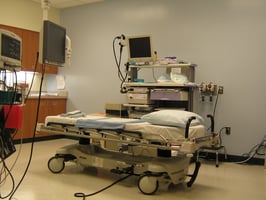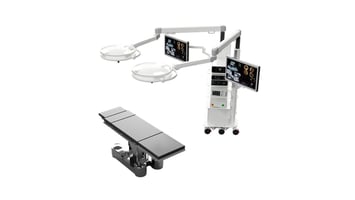In the world of healthcare, efficiency is often seen as a virtue. This is especially true in...
SEEE: Safety, Efficiency, Economy, Effectiveness
Outpatient healthcare facility designers face unique challenges in balancing safety, efficiency, economy, and effectiveness (SEEE) due to the complex needs of patients, staff, and the public who utilize the environments. The following post enumerates several principles for incorporation in the design of outpatient facilities:
Prioritizing Safety:
- Infection control: Design facilities to minimize the risk of healthcare-associated infections (HAIs) through proper ventilation, effective segregation of clean and dirty areas, washable and anti-bacterial surfaces, and easy access to handwashing and hand-scrub stations. Design waiting rooms and other public areas to avoid crowding.
- Codes, regulations, and emergency preparedness: Identifying and applying the layered code and regulatory requirements is essential. Building code, Life Safety Code, and Department of Health regulations must be followed. Designers and providers must plan for efficient evacuation and emergency response, including properly located accessible exits, clear exit and wayfinding signage, and well placed evacuation plans. Other considerations include the need for fire and smoke rated barriers, sprinkles, fire alarms, nurse call systems, and dedicated emergency power systems.
- Patient safety: Involves factors such as accessibility, universal design, proper clearances, and clear sightlines for visibility. Implement safety features like grab bars, slip-resistant flooring, double acting doors at patient bathrooms, and effective signage to prevent mishaps or injuries. Assure visibility of patient rooms and areas from nurse stations and control areas.
Boosting Efficiency:
- Workflow optimization: Arrange the floor plan to optimize clinical workflows and minimize travel distances for patients and staff.
- Integrating technology: Utilize technology to streamline processes, save space, and increase throughput. Examples include incorporating electronic systems for medical record storage, online and tablet based check-in, patient tracking and monitoring, dictation, telehealth, and staff/patient education.
Optimizing Economy:
- Right-sizing: Evaluate patient throughput to finetune the space program determining the necessary number of rooms and proper size of spaces. Avoid overbuilding.
- Standardized design: Don't reinvent the wheel. Create design standards for clients and facilities, especially when designing multiple similar facilities for a client.
- Modular and Prefab: Consider modular construction, prefabricated components, and standardized design elements to reduce costs and improve construction efficiency.
- Long-term maintenance: Design with materials and systems requiring minimal maintenance to save on future costs.
- Flexibility: Design spaces that can be easily adapted to accommodate changing healthcare needs and technologies.
Enhancing Effectiveness:
- Patient-centered design: Design spaces that improve the patient experience and promote patient comfort, privacy, and dignity. This includes incorporating things like natural light, calming color palettes, comfortable furniture, family-friendly amenities, proper acoustics, aural and visual privacy, and ease of access, among others.
- Improving staff wellbeing: Well designed facilities improve the provider and staff experience enhancing their morale, well-being, and effectiveness, and this translates directly to improved patient care.
- Better outcomes: Well designed facilities help to achieve better outcomes. This includes higher patient satisfaction; faster recovery times; lower infection rates; reduced costs of construction, operations, and patient care; better staff retention; and overall enhanced competitive value.
Designing outpatient healthcare facilities that balance SEEE is a complicated but worthwhile pursuit. By prioritizing Safety, boosting Efficiency, optimizing Economy, and enhancing Effectiveness, designers and providers can create exceptional healthcare environments that will lead to better patient outcomes, lower costs, and improved experiences for everyone involved. If you are interested in ambulatory healthcare facility design, please visit the Ambulatory Healthcare Design Lab for more related posts.




